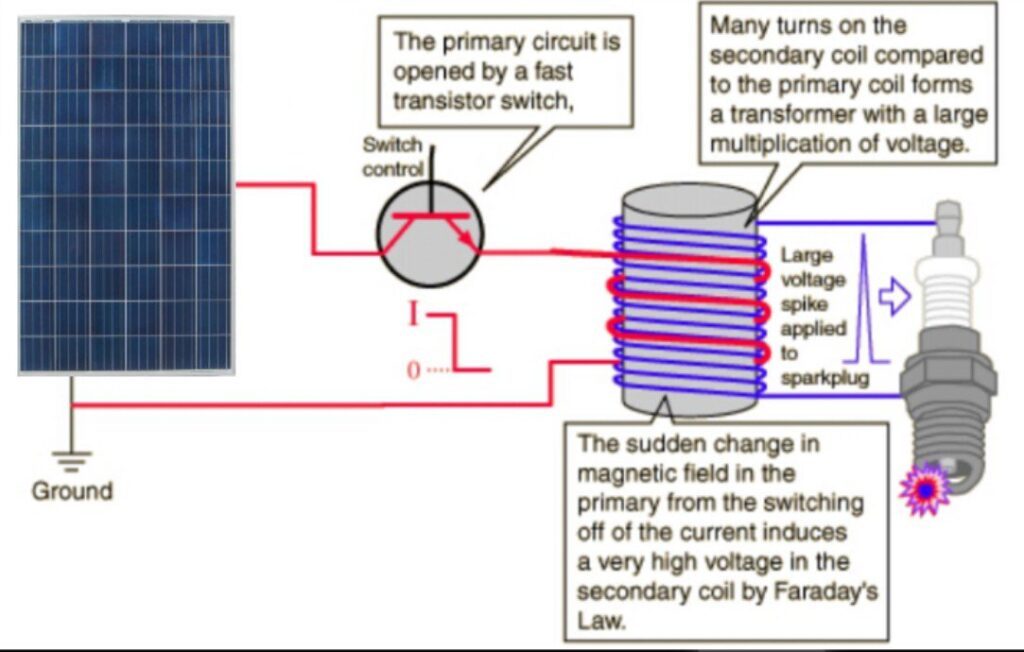Over 100 years ago Nikola Tesla informed the solar and electric car industry how to produce kWs of energy from just 10 watts.
“When it was charged full, I discharged it suddenly, through a short circuit which gave me a very rapid rate of oscillation. Let us suppose that I had stored in the condenser 10 watts. Then, for such a wave there is a flux of energy of (4 x 104)2, and this is multiplied by the frequency of 100,000. You see, it may go into thousands or millions of horsepower.”
“by discharging the condensers, either through a stationary gap or through a gap with a mechanical interrupter, I obtained any frequency I desired, and perfectly undamped waves.”
During a 1891 New York lecture Nikola Tesla started:
“The discharge of a condenser affords us a means of obtaining frequencies far higher than are obtainable mechanically.”
Spark gaps played a central role in many of Nikola Tesla’s high voltage devices. In its simplest form, a spark gap is nothing more than two electrodes with some space in between (see image above of a simple spark gap made by Paul W Kincaid) through which an electric spark passes when the voltage in a circuit reaches a high enough level.
“Whenever you say “the break”, you mean “a spark gap”?” lawyer asked Nikola Tesla in 1916
“Yes; otherwise I use the term “circuit controller, preferably”. Nikola Tesla
“With small currents through the gap it is best to employ aluminum, but not when the currents are large.” Nikola Tesla
Therefore, by connecting a 10 watt solar panel to a capacitor and thereafter discharging the capacitor suddenly, through a short circuit (a spark gap), a 10 watt solar panel’s output could potentially be transformed into kWs of energy.
An automobile’s ignition coil does essentially the same thing. An ignition coil’s primary function is to transform the car battery’s 12 volts into the 30-40,000+ volts (30-40 kVs) needed to create an electric spark in the spark plugs to ignite the fuel.
We can use Nikola Tesla’s ingenuity again today to not only revolutionize the solar energy industry, but to revolutionize the electric car industry too.
By connecting a solar panel to a mass produced ignition coil circuit, the solar panel’s low voltage could be transformed into the thousands of volts (kVs) needed to power our homes, cottages and industries.
“The disruptive voltage when the spark is taken between points is approximately 30,000 volts per centimetre for spark lengths up to 2 or 3 centimetres, after this it is somewhat less, as the dielectric strength of air is relatively greater for small thicknesses.” 1914 publication – WIRELESS TELEGRAPHY, A HANDBOOK FOR THE USE OF OPERATORS AND STUDENTS, BY W. H. MARCHANT


